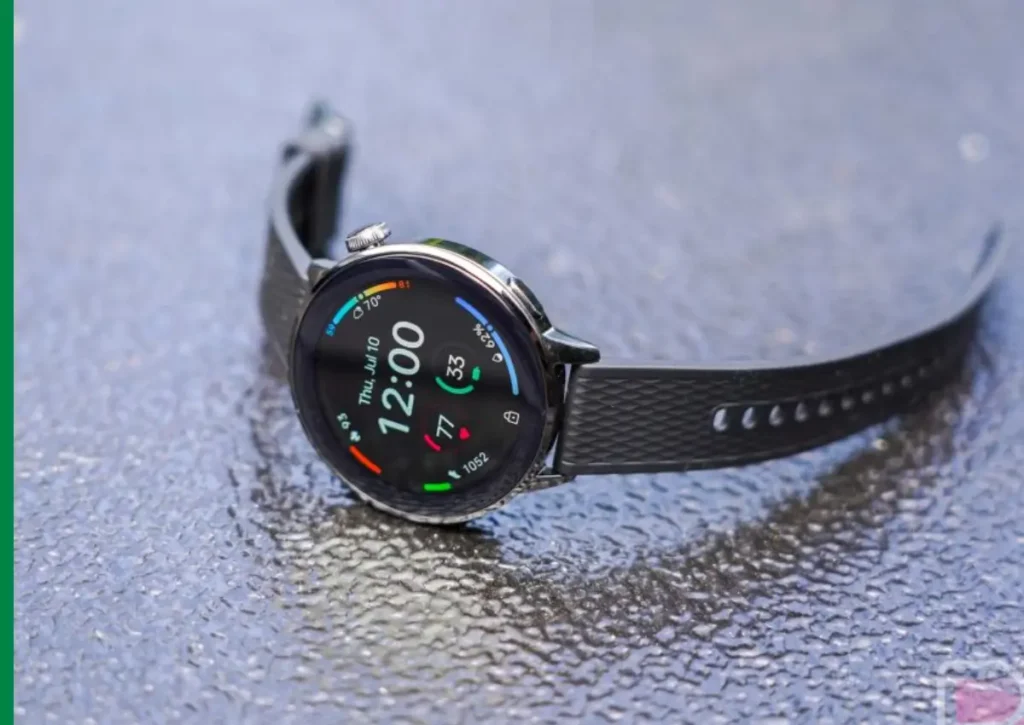In 2025 the smartwatch market has gone crazy with their choices now, and OnePlus has decided to take a dive into the small smartwatch industry with their OnePlus Watch 3 (43mm). Weeks after having experienced some practical testing, we are going to jump into whether this younger brother stands up to the hype of the larger brother. So this is what you have to know before taking your decision about the purchase.

OnePlus Watch 3 (43mm)—First Impression and Design
At first, the OnePlus Watch 3 (43mm) strikes the eye by its slimline design to fit smaller wrists. It weighs an impressive runtime of only 37.8g (1.3 oz) and thus is comfortable to wear throughout the day. 43mm case size is not overwhelming or oversized in any way, but it is still a solid case size, being neither too small nor too large; it cannot be called bulky at all and does not interfere with daily tasks.
The design story is not, however, without compromises. However, unlike the bigger brother, this one does not use premium titanium in the bezel and is simply painted with a glossy glass finish. This makes it look a bit more entry-level rather than premium and some users could be inclined to compare it with the entry-level smartwatches.
The watch is available in two colors namely Silver Steel and Black Steel. These options are somewhat restrained but can be classified as very professional, both casual and business-wise. The time scale with hour markers on the display gives it an old-school look, which enhances the entire look.
OnePlus Watch 3—Display quality
The 1.3-inch AMOLED screen is quite a show given the price tag on this watch. It has a maximum brightness of 1000 nits and a sharp 466 x 466 resolution, hence making it easily visible even when outside in full sunshine. Display quality almost goes toe-to-toe with luxury brands such as Google Pixel Watch 3 and one-ups the Apple Watch Series 10.
Performance-wise, the OnePlus Watch 3 (43mm) doesn’t disappoint. Powered by the Qualcomm Snapdragon W5 Gen 1 chipset and running Google Wear OS 5, navigation feels smooth and responsive. The 32GB internal storage paired with 2GB RAM provides ample space for apps and ensures fluid multitasking.
Battery Life
This is where the expectation has to be controlled. The battery is a 354 mAh cell enabling an estimated 2 days worth of use with the always-on display turned on. Though this is not bad on a small smartwatch, it is way less compared to the initial OnePlus Watch 3, which had a massive battery life of 60 hours.
In our experience using the watch all the time, tracking sleep, and exercising on an hourly basis daily, the watch needed to be charged once every two days. It can last up to three days with the always-on display turned off, but you will find that you will be charged more often than other large smartwatches.
With a rapid charge feature, it is a grace that it fills up the battery very fast as the need arises.
Health and Fitness Tracking
The OnePlus Watch 3 (43mm) provides all-encompassing fitness guidance involving the oHealth app system. Heart rate monitoring and sleep tracking were also effective in comparison with other devices such as the Oura Ring and Amazfit Helio Strap.
The watch comes with a long list of workouts but you will have to browse through it to create your favorite workouts. The screen only adjusts its brightness when doing workouts automatically, and the performance is great while working out.
Nevertheless, one important thing is missing: a temperature sensor. This is growing in health surveillance, especially the development of baselines to forecast the development of illness, as well as women cycle monitoring. To a smartwatch that has customers with health features in mind, this seems a worthwhile gap.
Water Resistance and Durability
The OnePlus Watch 3 (43 mm) preserves strong credentials in terms of durability with the IP68 rating and 5ATM water-resistant certification, which allows it to be submerged in water up to 1.5 m deep within 30 minutes. This renders it appropriate in terms of swimming and showering as well as most of the activities in the water.
But the replacement of sapphire crystal with 2.5D cover glass is a significant regression in scratch resistance. Although sapphire crystal can hardly be scratched, the other material meant in this case is easily prone to damage through day-to-day use.
Software experience: Wear OS 5 Integration
The software experience is smooth and familiar, running on Google Wear OS 5 with RTOS optimization by OnePlus. It increases battery life and still has access to the entire Wear OS environment via the dual-OS strategy.
There is a lot of customization of the watch faces, such as video watch faces, which give your device some color. Note, however, that since video faces are very intensive in terms of battery, you need to be cautious about using them when battery life is of primary concern to you.
Band options and accessories
They are OnePlus Watch 3 (43mm), and it is reasonable to say that its use of a standard 18mm-sized watchband is rather restrictive, since the most frequently used sizes 20mm and 22mm, are also common in smartwatch bands. This makes it difficult to get third-party replacement bands.
The rubber strap that comes with it is user-friendly and simple. Since the band size is narrower, a special search should be conducted to find a more premium strap that will match.
OnePlus Watch 3 (43mm) — Price
At $299, the OnePlus Watch 3 (43mm) sits in a competitive price bracket. While it’s $50 less than the original OnePlus Watch 3, the numerous compromises raise questions about value.
Consider these alternatives:
- Samsung Galaxy Watch 8: Starting at $350, offering more premium features
- Google Pixel Watch 3: Similar pricing with potentially better integration
- Original OnePlus Watch 3: Only $50 more with significantly better specs
Final thoughts
The OnePlus Watch 3 (43mm) is a classy, mini smartwatch that has all the premium features in a smaller design with the same heavy price. With a sleek design, colorful AMOLED display, smooth Wear OS 5 interface, and good fitness tracking technology, it is a mighty competitor in the line of devices that can be used on smaller wrists or as low-weight everyday drivers.
But there are trade-offs, however. The slimmer features, reduced battery life and lack of health sensors might disappoint some users, who seek more components to their products—at least when rivals provide more powerful features at a slightly higher price. A portable and attractive design might also be the things that you would want in a watch so it might still be a good purchase.
However, when you rank such features as performance and health at the forefront of your priorities, you should be willing to expand your budget to find complete requirements.



